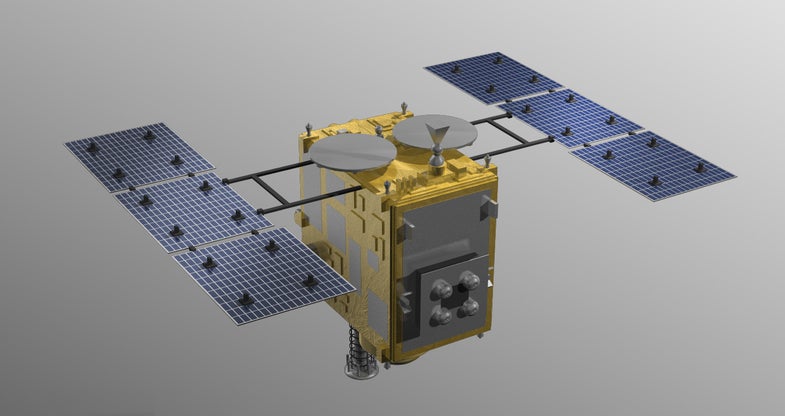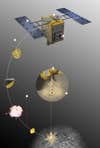A Spacecraft That Packs The Punch Of A Warhead
Hayabusa 2 could be the first to intercept and blast an asteroid.


Hayabusa
After a dysfunctional Hayabusa mission returned to Earth in 2003 with a measly 0.1 milligram of asteroid dust, Japan’s Aerospace Exploration Agency (JAXA) didn’t give up–it doubled down. In December, the $310-million Hayabusa 2 will launch on an intercept course with a 900-meter-wide asteroid between the orbits of Earth and Mars. Sometime in 2018, the craft will blast its target with a missile, sweep the unweathered surface to harvest samples, then head home with the very first virgin asteroid debris ever collected. Or so we hope.
Using a Ka band high-gain antenna (32 kilobits per second), Hayabusa 2 can send and receive more than four times as much data as its predecessor.
Two solar array ‘paddles’ provide up to 2.9 kilowatts of power at a distance of one AU (93 million miles) from the sun.
The four ion engines use xenon propellant to push the spacecraft to cruising speeds of 2 kilometers per second, or 4,473 mph.
A detachable launcher, which takes a cue from military weapons designed to penetrate tank armor, dispatches from the mothership about 500 meters above the asteroid’s surface.
At 100 meters, 10 kilograms of explosives turn a copper disk carried by the impactor into a giant bullet aimed at the asteroid.
The impact creates a crater 1 meter deep and 10 meters wide.
After the explosion, the mothership swoops in, hovering just above the crater. Its sampler arm fires tiny projectiles made of tantalum at 300 meters per second and collects whatever debris ricochets into its collection tube.
JAXA’s goal is to bring home at least 100 milligrams of dust. Researchers will have to wait to weigh and study the samples until Hayabusa 2 returns to Earth in 2020.
This article originally appeared in the October 2014 issue of Popular Science.